
Bandit Lites Founder’s Vision Shaped An Emerging Industry
What started in 1968 when a 12-year-old thought it would be fun to snatch some lights and charge to shine them on the Beach Boys is now a global powerhouse in the live event industry with 400-plus employees in offices in the U.S., Europe and Asia. Before concert touring was even a business, before people even thought they could make a living at it, Michael T. Strickland would build from nothing a company that innovated, established trends, created and promoted game-changing product and provide lighting for concerts, film, television, theater and architectural design.
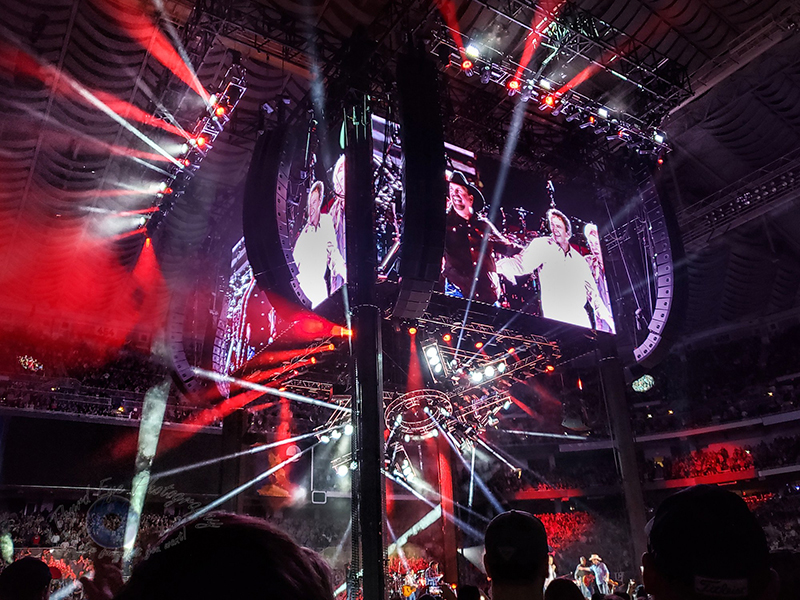
The awards and honors bestowed on Bandit Lites through the years are too numerous to list, but a few include CMA’s Production Company of the Year, Pollstar Lighting Company of the Year and, of course, the Parnelli Award for Lighting Company of the Year. A first for any in our industry was when CNN/USA Today named Strickland Entrepreneur of the Year in 1999, a distinction shared by the likes of Bill Gates and Michael Dell. A short list of award-winning lighting designers who have worked with Bandit includes Willie Williams, Baz Halpin, Dave Davidian, Patrick Woodroffe, Mark Fisher, Abbey Rosen Holmes, Peter Morse, Marc Brickman, Chris Lisle, Mike Swinford and a host of others.
For Strickland, there were two earthquake-sized paradigm shifts in his career so far. The first came in 1980 in the form of the hit film, Urban Cowboy, which propelled the country genre solidly into the mainstream at a time when Bandit Lites lit almost 100 percent of the industry. “Before that movie, country music was perceived as for pipefitters and unemployed hicks, but that movie made country cool,” Strickland says. The second shift happened a decade later when Garth Brooks burst onto the scene. “He came to us in 1989 and said he wanted a lighting rig as big as the one KISS had. He had a marketing degree from Oklahoma State with a couple of minor hits, and we kind of humored him, saying, ‘Sure, buddy.’” By Sept. 1991, “we were standing in [Dallas’] Reunion Arena for his first TV special, with Dave Butzler’s 1,500 Par cans hanging overhead. Garth had the nerve to approach country in a pure rock fashion.”
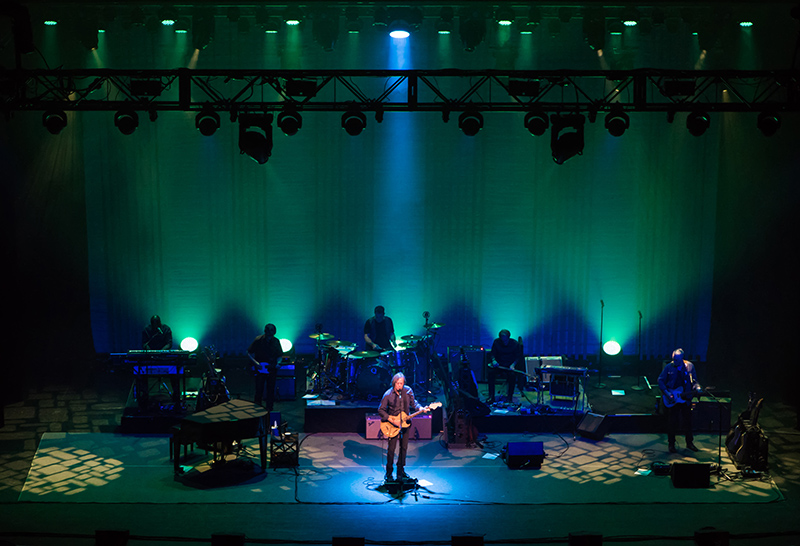
Those who think of Bandit as “only” a company for country acts aren’t paying attention. “Some looked down on us as hicks from Tennessee who didn’t smoke pot or do drugs, but when we started picking up acts like R.E.M. and Faith No More, the perception changed.” Likely overlooked is Bandit’s work with the heavy metal acts of the day which included Quiet Riot, Twisted Sister, Krokus and Ratt, among others. Strickland was behind the board during a 1984 Quiet Riot rehearsal at the Los Angeles Forum when up walked members of Van Halen, including production manager Patrick Whitley. Quiet Riot’s Kevin Dubrow was walking them up, showing off what Strickland was doing for their band which, much to their chagrin, was significantly bigger and better than the celebrated Van Halen rig at the same time. He was running it all with a custom built 120-way console. At about 10 feet long, it was then among the world’s biggest.
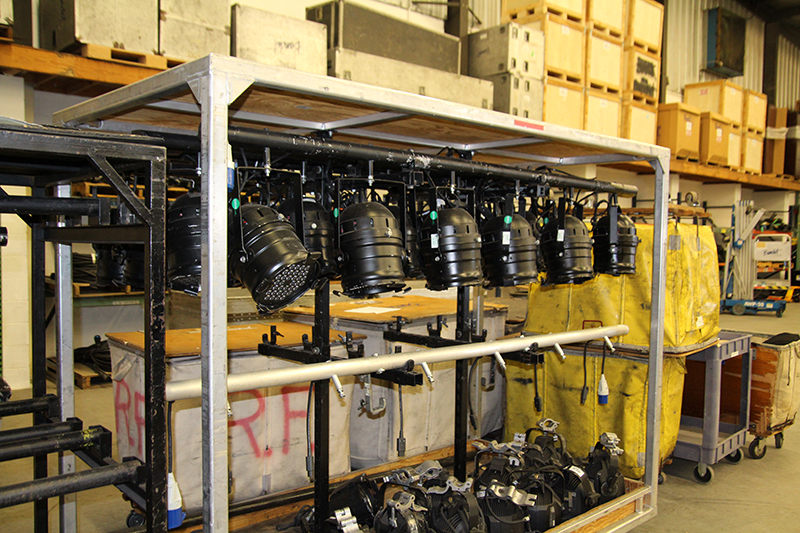
Bandit set the example of constantly embracing new technology in true visionary fashion. They partnered with High End Systems and were the first adaptor of the groundbreaking Intellabeams, which he used on tours by Squeeze, Ringo Starr and Billy Ray Cyrus. The team worked to design, create, manufacture and market a proprietary line of LED equipment, GRNLite. Strickland owned the U.S. subsidiary of James Thomas Engineering from 1982 to 1994 and also played a key role in the U.S. operations of Tomcat and Avolites during the 1990s. Bandit Lites also represented and had alliances with Morpheus Lights and Martin. Bandit purchased a number of lighting firms through the years, including Meteorlites in both the U.S. and the UK. And it all started in the unlikely of places.
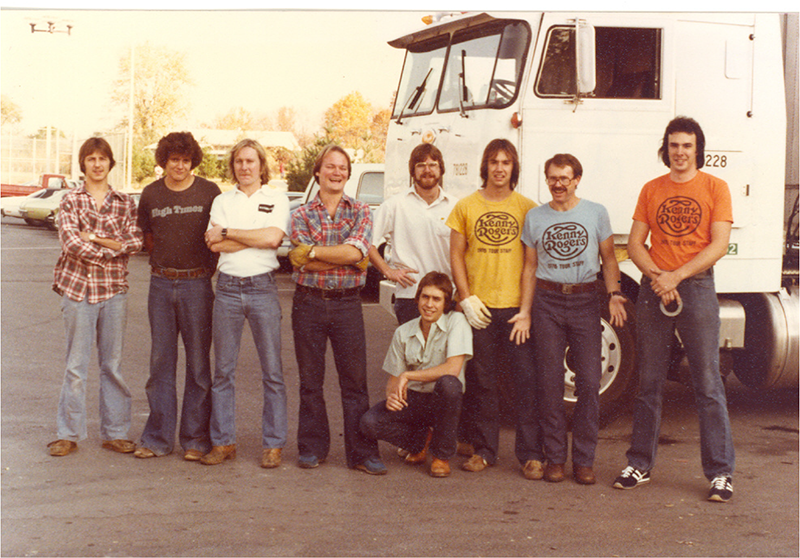
Curious Beginnings in a Curious Place
In 1920, the Eastman-Kodak company set up a manufacturing plant in Kingsport, TN, 90 miles northeast of Knoxville, and over the next few decades, the company sent many executives there from their headquarters in Rochester, NY. One of those people was Tom Strickland, a chemist, who ran the plant. Tom Strickland and his wife Marion met when both went to college in Atlanta. Fun facts: Michael’s mother had a small part in Gone with the Wind, and his father was a professional standup bass player who played with the likes of Glenn Miller and Tommy Dorsey. Their passion for the arts was passed onto to their son Michael, born in 1955, who at age five played drums — but without much notable success. “And later I got kicked out of the school choir because I can’t carry a tune in a bucket,” he laughs. “But I fell in love with music when my dad took me to an Andy Williams concert, and I knew I wanted to be a part of it.”
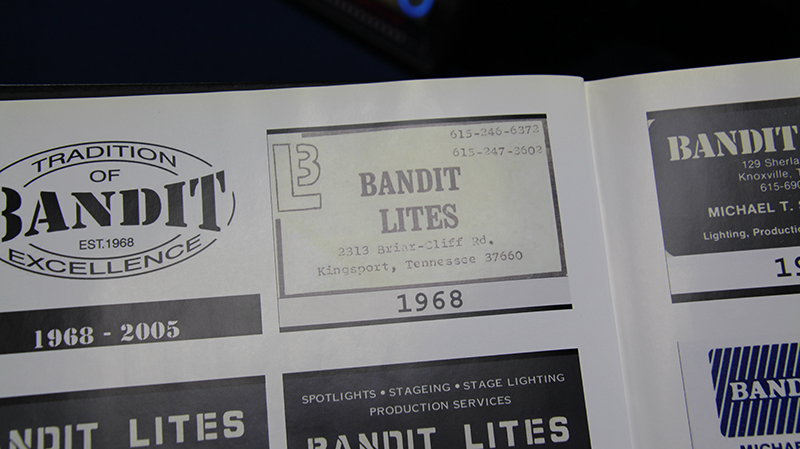
The kid had the audacity to not let what he didn’t know get in the way. After a Beach Boys concert, he found the promoter and asked If he would like lights for the next show — for a mere $25, “which seemed like a huge amount of money to a 12-year-old.” They agreed, and Strickland continued to approach other bands with the deal, and he quickly proved he had a talent beyond pilfering lighting gear. “I didn’t have any knowledge back then, but neither did the people I was working for, so anything and everything I did was correct. The color I used was right. The mood I set was right. There was no wrong for these people, nor was there any wrong for me.”
While he was already over six feet tall and looked older than he was, that still didn’t get him a driver’s license, and thus, when the Beach Boys asked him to go to another city, he had to say no. But then he hired an older friend with a trailer. Soon he was doing most of the shows within a 300-mile radius of his hometown, all with “borrowed” gear from the high school. “Back then, no one locked anything!” (He would go back and donate lighting gear to the school, and the school put him in the Alumni Hall of fame, so there’s obviously no hard feelings.) Impressively, he juggled his job with not only school, but also being a player on the school’s football and basketball teams. Quickly he outgrew the “borrowing” phase and remembers the first lights he owned were R 40 lamps in coffee cans on plug strips mounted in wooden boxes. “Dimmers were household sliding dimmers mounted in a wooden box. Lights were on a 20-foot steel pole with pulleys on top to hoist boxes of R 40 lamps to the top. Later we jumped into the big league with PAR cans, Genie Pneumatic towers and super lifts and Rohn Tower truss.”
This venture had a future, but what to call it? You have to be of a certain age, but a popular commercial at the time for Fritos chips featured the “Frito Bandito,” which played on questionable stereotypes by today’s sensibilities. Strickland thought that “Bandito” would be an apt name for his company. Wisely, he settled on just “Bandit Lites.”
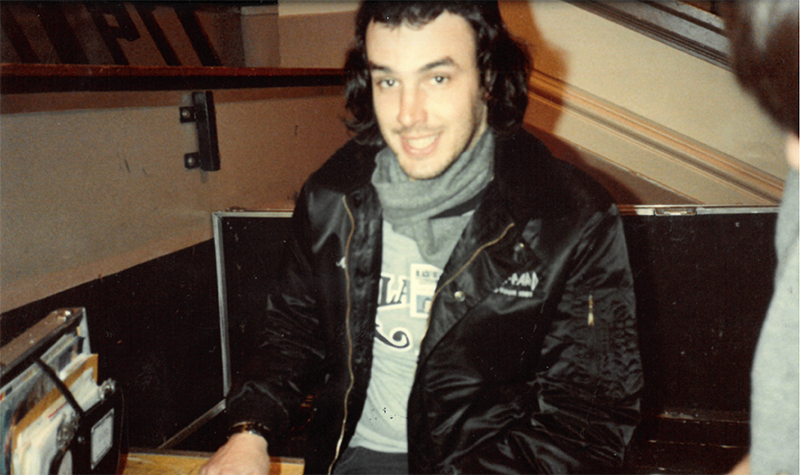
Southern Living
As he eased into his mid-teens, his roster of clients grew to include The Monkees, Frankie Valli and the Four Seasons and the Grass Roots. In his senior year of high school, he grossed $200,000, “though I ended up only [clearing] $10,000.” Then to college he went, heading to University of Tennessee in Knoxville. He ran the business out of his dorm while completing a business degree, and then a law degree, all while adding clients including The James Gang, Blue Öyster Cult, Conway Twitty, Loretta Lynn, Merle Haggard, Dolly Parton, Pure Prairie League, Blackfoot and even Parliament-Funkadelic during those years. “All of the funding came from operations, and no outside financing was ever used,” he says, adding: “I am not sure anyone would have loaned us money even if we had asked.” As for his parents, they were concerned since he had been “bitten by show-biz bug.” Strickland laughs, recalling that while working with these big stars didn’t impress his mother much nor ease her concerns, “when she and her friends saw that I was written up in the magazine Southern Living, then she was impressed!”
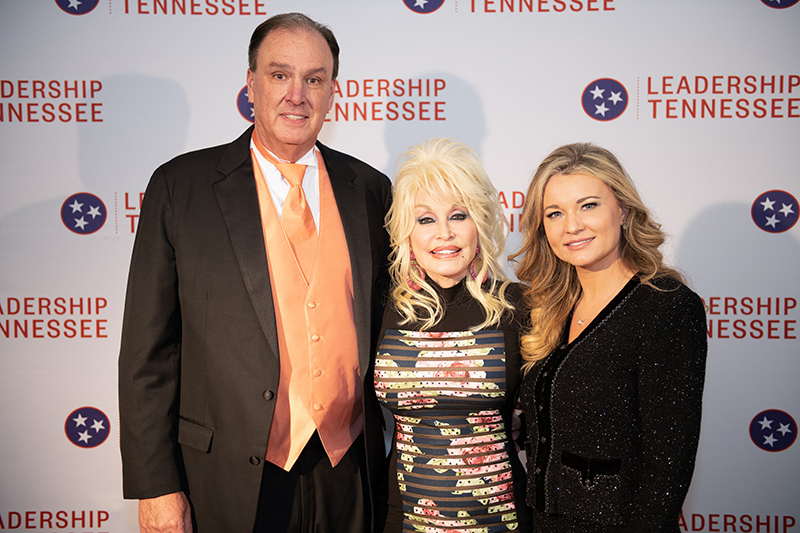
A pinnacle moment for him and the company was when client Kenny Rogers’ career exploded with The Gambler. He was PM and LD of that tour, one of the biggest in the late 1970’s, which gave Bandit tremendous national exposure. By 1984, Strickland was still running lights, winning favor from a succession of discriminating artists, and he also had a knack for spotting rising stars like Kenny Rogers, recalling something special about the long-haired soft rocker long before he had become a country music sensation. “I have an innate ability to recognize a hit song and a good band,” he says. Back when R.E.M. was just a bar band, a skinny kid named Michael Stipe approached Strickland, asking Bandit to light their show. The company would continue to light R.E.M. through the decades until the group disbanded. Strickland spotted many other rising stars early in their career, performing music as diverse as Amy Grant to Stryper. “I’ve only had two failures — Point Blank and Human Radio.”

Other Ventures
In 1982, Bandit opened its Nashville office. Meanwhile, all of the metal and rock acts Bandit worked with toured Europe, which made a European office inevitable. Once there, Strickland met Graham “James” Thomas and John Walters from James Thomas Engineering (JTE) and immediately saw the value of their “spun aluminum” par can. Bandit placed an order for several hundred par cans and introduced the Thomas Par to the U.S. market. Strickland then stuck a deal to represent Thomas Engineering in the States and hired Mike Garl to run it. At the same time, he was introduced to the people at Avolites, and Strickland adopted their dimming and control systems, bringing them to the U.S. By the mid 1980’s, Bandit used all Thomas truss and pars, along with all-Avo dimming and control and socapex cable. Bandit introduced these standards to the U.S., and by the end of the decade, most major companies had followed suit.
With his ownership stake in JTE, Strickland played a part in the development of many standard products on the market today. Elements of the revolutionary Thomas Pre-Rig Truss came from Bandit, as did the Thomas roof system. In fact, the first roof system ever erected was done in Bandit’s parking lot in the early 1980s as Bandit assembled a box of PRT on four Thomas Towers and then literally “put a skin on it.” Photos of the experiment were sent to the Thomas staff in the U.K., and a new industry standard caught on. The 36 Lamp Pod and many other innovations were as a result of the Bandit staff working with the Thomas staff to meet the needs of their clients. Strickland would sell his stake in JTE back to its original owners in the 1990s.
In the same time frame, Avolites was spun off by The Carlton Group, and Strickland purchased the U.S. portion, moving it from New Jersey to Knoxville. Development of what would become the Diamond Console began, along with a new 72-way dimmer rack. Sales and service for Avolites were brisk, and the company reorganized itself both sides of the Atlantic. The U.K. side was purchased by the directors, who eventually purchased the U.S. side from Bandit. Then, when Chris Cronin left Thomas engineering and set up Tomcat in the mid-1980s, he turned to Strickland as a collaborator. The pair were nominated for stage set of the year for Amy Grant and Quiet Riot. When Tomcat was firmly on its feet, Strickland stepped back to focus on Bandit. Today, Strickland also owns BPH, a property company; Best Techs, a labor firm; Gear Park, a storage facility; and Vol Air, an aviation firm.
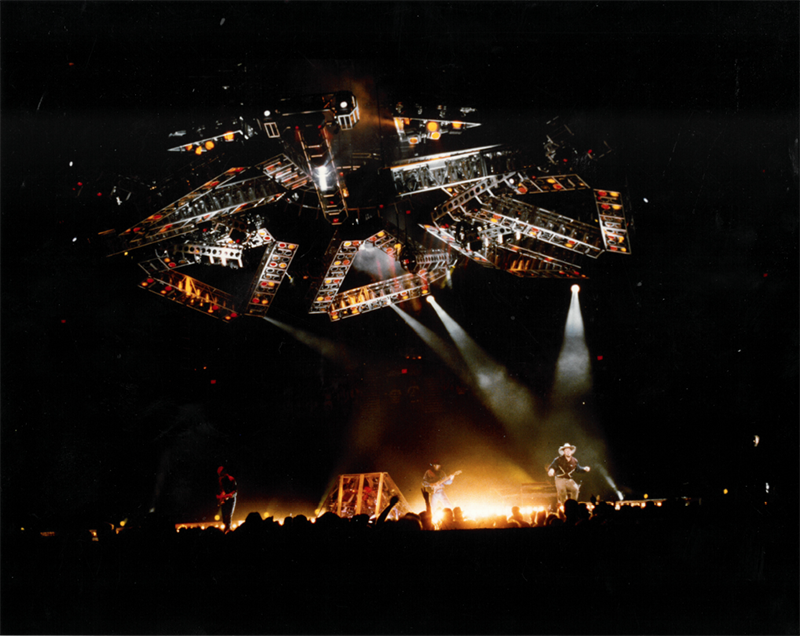
The 1990s and Beyond
As noted, 1990 marked the beginning of a long relationship with Brooks. “Garth raised the bar for country music,” Strickland says. “Bandit was there when he played Central Park in 1997,” he adds — which still holds the record for the biggest Central Park concert crowd, more than 980,000 strong, topping the 600,000 drawn by Paul Simon in 1991. During the 1990s, Bandit also delved into film and television work, including high profile events like HBO Boxing, HBO Comedy, MTV Spring Break, The Dove Awards, Fox on Ice, Clintons Economic Summit, CNN, and hundreds of other shows. One of the biggest events Bandit was part of was the Super Bowl XXIX Half Time Show in Miami in 1995. Bandit also worked on more than 200 feature films in the 1990’s, including Wayne’s World 2.
For the mother of all New Year’s Eves, counting down to the year 2000, the global Bandit team was part the celebrations in Los Angeles, New York, London, Beijing and Hong Kong. Then there were presidential inaugural balls and summits in the U.S., and in in the U.K., the Blenheim Palace Festivals and Feet of Flames in Hyde Park, plus support that Bandit provided to major touring acts all over the world. In the U.S., Bandit also played a key role supporting major auto races along with NBA finals, CMA-related events, Harley Davidson’s 100th Anniversary and festivals including Bonnaroo. In 2002, Bandit Lites purchased a 150,000 square foot building in Nashville while maintaining their previous 30,000 square foot facility nearby. Aerosmith, Van Halen and Queen all became clients of Bandit as the firm grew.
A litmus test of the character of the company is how they responded to the economic crisis of 2008/2009. Bandit’s financial advisors made the usual recommendations: cancel health insurance, cancel 401Ks and cut at least 10 percent of the staff. Strickland rejected all of that. “We burned through $30 million riding out the storm,” he says. “Even artists like U2 and Madonna had it rocky, because those bands couldn’t sell any more tickets than they already were, and they couldn’t raise ticket prices.”
At the start of the next decade, Bandit embraced LED technology and worked to design, create, manufacture and market a proprietary line of LED equipment, GRNLite. The creation of this range was inspired by longtime Bandit client and staunch environmentalist Jackson Browne. “Jackson came to Bandit and worked with Dizzy Gosnell and the team,” Strickland says. “Crosby Stills and Nash and Neil Young soon joined the movement, and GRNLite was born. By 2011, Bandit Lites owned more LED lighting fixtures than anyone else in the world. Over 1,000 GRN PARS, 600 GRN Moving Lights, GRN Wash Lights, GRN Battens and GRN 8 Lites became a standard on Bandit shows.” Bandit opened its shop in Charlotte, NC with Andrew Fisher at the helm to handle the East Coast demand. “There have been three Charlotte facilities to date, with plans in progress now for the new, larger fourth facility.”
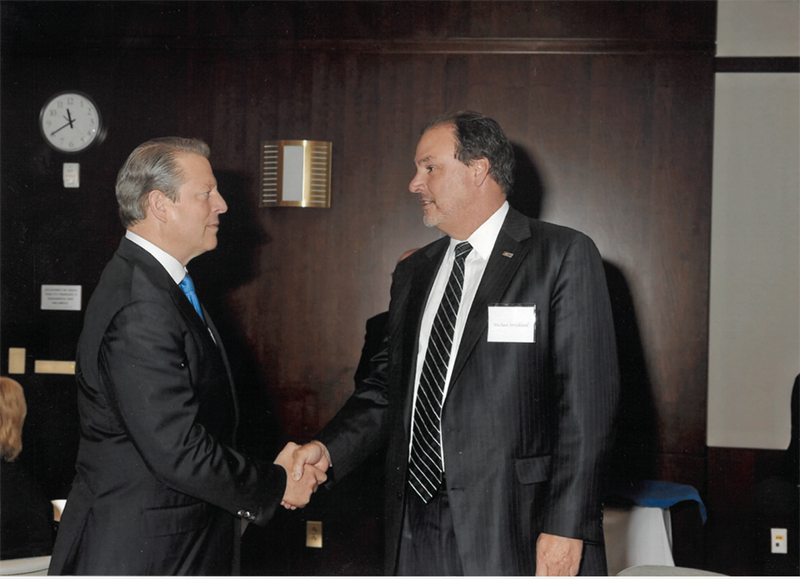
Go Ask Alice
Like many working at Bandit, VP Michael Golden goes back a long way with Strickland. “I was a jack of all trades at Freedom Hall Civic Center [in Johnson City, TN] in the late 70s when I first met Michael,” he says. “Because of my work as a stagehand, I got a call from him to go out with Kenny Rogers.” Golden has been with Bandit ever since, and you don’t spend time in this business without coming up with good stories. One of Golden’s best involves Alice Cooper, a favored client. “We’d been doing his tours for five years in a row when his management called up and said we needed to come in at a lower price.” Golden took the request to Strickland who naturally was less than enthused by the proposition, but Golden saw an opportunity: “I said ‘let’s say okay’, but only if he agrees to play golf with us once a year.” This stipulation was written into the contract. “Now, if we go see his show or he’s playing a few hundred miles of us, we grab our clubs and go!”
Strickland’s funniest memory of Golden is also bittersweet. Strickland had carefully saved every bit of gear he ever used, including items used when he started the company back in middle school. “This consisted of a lot of lighting ‘equipment’ made out of plywood [and] two-by-fours — essentially wooden boxes with plug strips and R40s in them,” Strickland says. “I saved every bit of it, because I thought it was historic.” It was a thought his coworkers didn’t share, because he pulled into the parking lot one day from being on the road and saw Golden and Kent Shafferman standing in front of a 12-foot pile of his early gear, ablaze. “Michael [Golden] turned around and had a look that said, ‘Uh-oh he caught us,’” Strickland says. “I got out almost in tears going, ‘what are you doing?’” They thought they were doing a good thing, getting rid of old gear they didn’t use to make more room in the warehouse. “I did get a Polaroid of the bonfire, though, and today we all laugh about it.”
For Golden, what makes Bandit key is the loyalty factor. He tells of Charlie Daniels, who at one point for many years went out with large tours using Bandit, and now plays much smaller venues. “Charlie doesn’t really carry a lot of gear out and hasn’t for years, but he called us recently and said he wanted to revise his popular Volunteer Jam,” which marked 40 years with its show last August in Bridgestone Arena. “There was no question. We told him to tell us the locations and dates and we’d be there for him. I don’t even know if we charged him beyond labor.”
Bandit continues to develop and manufacture products like the PowerPro power distribution system in the U.S. and System 125 in Europe. System 125 power distribution equipment was purpose designed to meet all VDE, UK and EU standards and all components are CE marked. The Bandit Moto Data and motor control systems are synonymous with a Bandit system on a global basis.
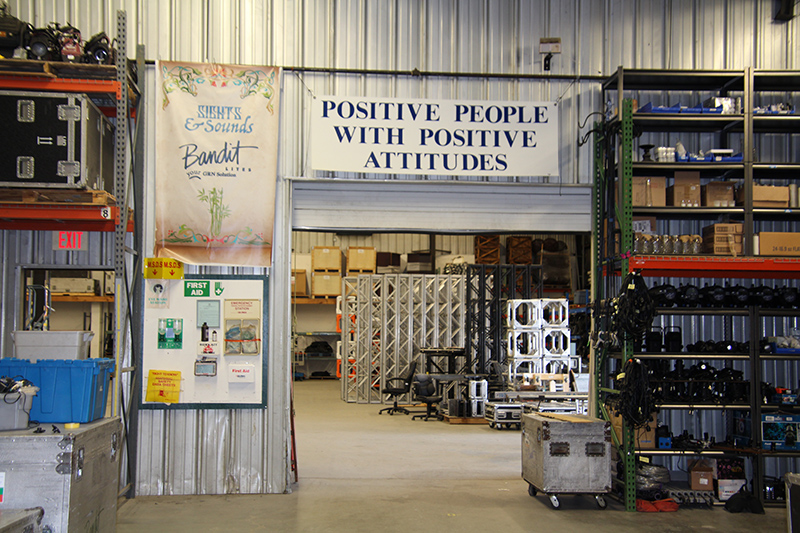
Leadership and “Humanomics”
“For Michael, it’s about relationships,” says one-time Bandit employee and LD Chris Lisle (Jason Aldean, OneRepublic). “It’s not about a quick buck, but about taking care of people. There is a clear, bigger picture that Bandit runs by, and it shows through the countless long-term clients they have. I truly believe that he cares about people and lives his ‘humanomics’ philosophy.”
“Humanomics” involves not just taking care of employees in the work environment but being there to support their personal and family lives as well. Strickland was doing this before, during, and after most lighting companies had no permanent work force, just a list of “1099” (freelance) workers. He also makes sure the company is generous to the community. Farm Aid has been a Bandit project since 1991. Bandit began a corporate giving campaign that includes over 60 charities today and involves hundreds of thousands of dollars each year, supporting The United Way, The American Heart Association, Boys & Girls Clubs of America and many others.
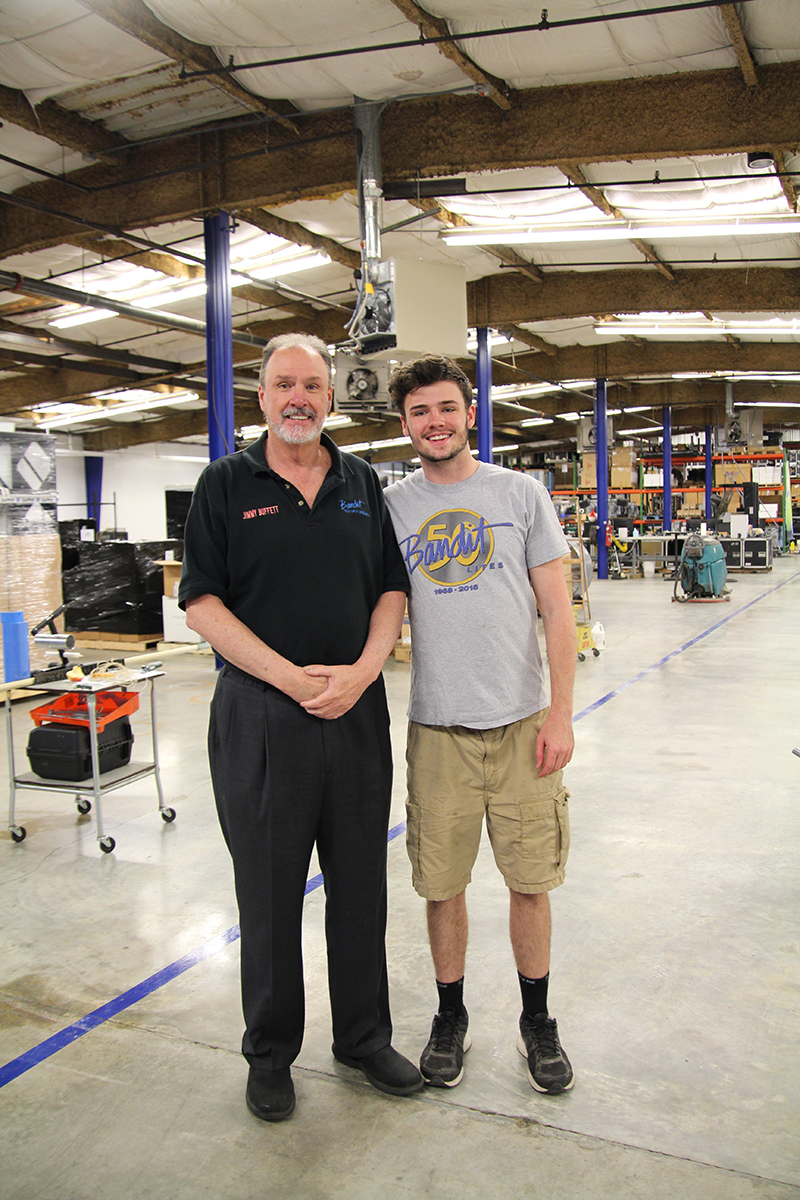
In conversations, it seems like Strickland’s primary skill set for his success was a type of homeschool: He studied at an early age what leadership really is, finding his models wherever he could, including the military, politics and sports. “I’m a big fan of leadership success,” Strickland says, citing influences from well-known leaders including former football coach and player Barry Switzer; the late Pat Summitt, coach of the Tennessee Lady Vols basketball team; and Joan Cronan, UT’s womens athletic director. Through the years, he’s become particularly impressed by Switzer and his style of leadership. “When Barry heard the idea to treat everyone equal, he said, ‘Are you [expletive] nuts? You don’t treat everyone equal; you treat everyone fair.’” He added that a successful leader must be equal parts dedication and passion.
Passion seems to have been with Strickland from the beginning. Like many in the 1960s, he loved music and bought a lot of albums. He looks for the passion in others. “Surround yourself with people of passion and treat them well,” he says. He learned from those who didn’t. Working early shows in the 1970s, he saw how other pioneering entertainment company owners treated their crew. He saw crew members treated badly, no benefits, etc., and knew instinctively that was wrong on many levels, including being bad for business.
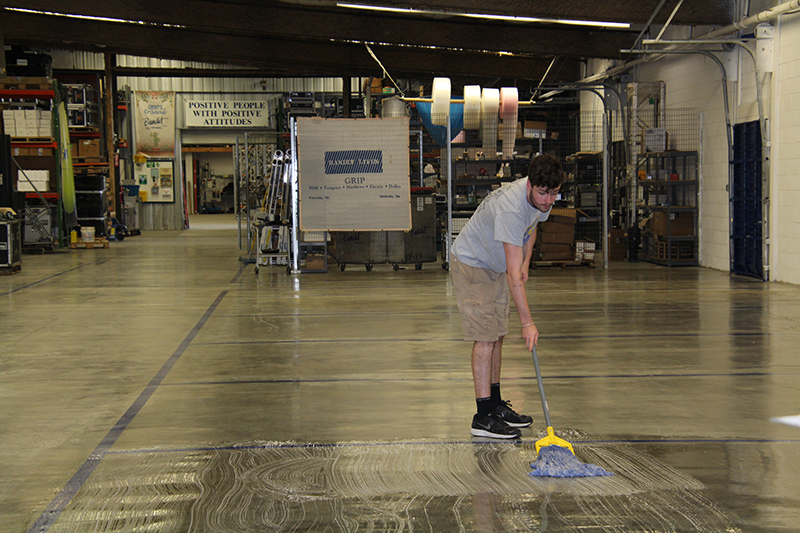
His younger brother Steve followed Michael into the business, joining Bandit in 1982 and has been part of the Garth Brooks crew from the very beginning. Michael has two sons, Cole and Chase. (On a recent visit to the Knoxville HQ, this reporter met Chase in the warehouse, hard at work in the shop.)
Reflecting back on it all, Strickland admits he didn’t know exactly where renting his school’s lights to bands would take him, or that a global business and industry would be forged. “I did know it was a lot of fun.”
Material for this article came from interviews, previous articles about Bandit in PLSN and the official Bandit history document written by Strickland.


